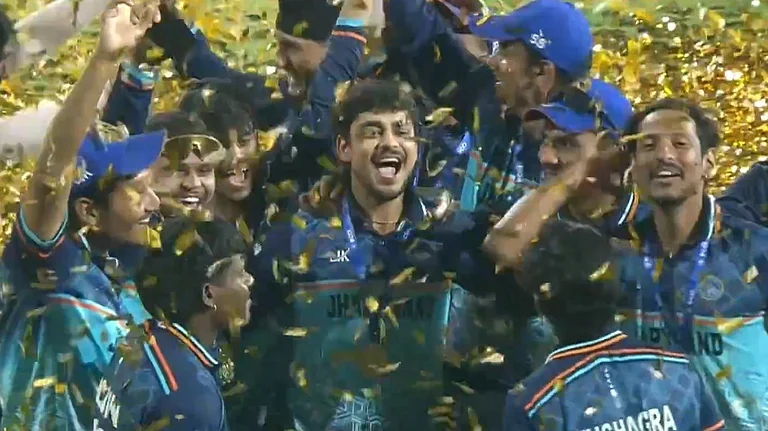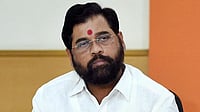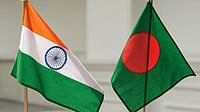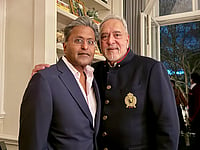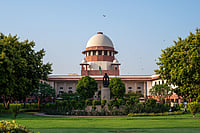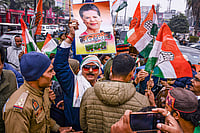One of the most momentous of the liberalisation measures would never have been taken,if a particularly determined FM hadn’t decided to go it alone. The second devaluationof the rupee, by 6 per cent in July 1991, did not have the consent of then prime ministerNarasimha Rao. So Manmohan Singh exercised his discretion as the chancellor of theexchequer. Did he jump the gun because Rao was afraid to commit?
Taken together, the two-stage devaluation of the rupee by a sharp 20 per cent in 1991was the first decisive, toughest and arguably the most far-reaching liberalisationmeasure. But even after a full briefing from Jairam Ramesh, then secretary in the pmo, Raoagonised over it. "K.N. Raj," he argued, "has written an article on thisand he thinks the 1966 devaluation was why the Congress party split. How can we allowit?"
In the then xenophobic political milieu, devaluation was akin to losing one’smanhood, and the timing was all wrong. It was a minority government, and President R.Venkataraman frowned darkly on such a big step even before the vote of confidence had beensought. Interestingly though, the first devaluation had been an even more agonisingdecision for Singh, who had a bit of dollar savings from his South Commission days, aboutRs 3-4 lakh worth, and stood to gain substantially. The good doctor resolved the battlewith his conscience in his unique way: he gave the gain to the PM’s relief fund!
The travails of the rupee serve to break a widely-held perception that Rao was agreater reformer than Singh and gave the latter a carte blanche to carry out his grandplans of converting India into a market economy and opening the doors to foreign funds.The reality was that Singh was an even greater socialist than Rao but was too good aneconomist to let politics prevail over good economics, something that Rao did. Aseconomist Ashok Desai, chief economic advisor (CEA) for the crucial period of 1991-93,says: "We had Rao’s benign neglect." Though to be fair to Rao, he stood bySingh, who was only his second choice as finance minister—former rbi governor I.G.Patel refused. Especially during Singh’s three resignations, the first of which camethree months after his swearing-in over the cut in fertiliser subsidy. All of them were ofcourse withdrawn.
The subsidy battle was a tough one which Singh lost out to the Congress, mainly Rao,who rolled back the price hike a bit without consulting him. After the first sharp cut, hewas never allowed to return to it. Not only was the battle for the fiscal deficit lost butSingh also had to starve vital areas of Plan funds, something he was loath to do.
In essence, the story of India’s reforms of 10 years is the story of these handfulof brave men: Singh and his A team, which continued more or less in or around governmentthrough the decade. They made the deals, worked on the politicians/ministers and ensuredthat the thread of reforms remained unbroken, if sometimes loose. P. Chidambaram, thencommerce minister and the complete architect of trade policy reforms, was to become FM fortwo years in the latter half and, as one writer described, lit a bomb under people’sbottoms by slashing income taxes and tariffs and beginning insurance reform. S.Venkitaramanan, then rbi governor and deputy governor C. Rangarajan—the latter isalso the most frequently suggested name for finance minister—put up able support.Montek Singh Ahluwalia, then commerce secretary, was finance secretary for the better partof the decade, ending it with his nomination to the imf as independent reviewer andproving his Ahluwalia principle that every 10 years, India (or an Indian!) must go to theIMF!
Coming from the World Bank in 1993 to succeed Desai, Shankar Acharya started late butwent on to have probably the longest-running tenure as cea. Rakesh Mohan, then advisor inthe industry ministry, has come full circle as the current cea, in between heading ncaerand going over the infrastructure and railway sectors with a fine-toothed comb. And JairamRamesh, transiting from the pmo to the Planning Commission, was resurrected as osd to workclosely with FM Chidambaram. And finally, cea in the late ’80s Bimal Jalan wasfinance secretary during the reforms and after a brief holiday in the World Bank, returnedin 1996 to go on to head rbi. Of all these, Desai never came back to government,preferring to be part of critical media. Nor did the economist he succeeded, DeepakNayyar. Now Delhi University V-C, Nayyar went on to write a scathing, brilliant criticismof the liberalisation measures.
Then there were Amar Nath Verma, former industry secretary, and the late P.R.Kumaramangalam—the latter was only too happy to rewrite the mrtp Act, something hisfather had helped draft. Says Acharya, honorary director at the icrier and who’scurrently on leave from the finance ministry: "Continuity wasn’t a matter ofaccident. Nor was it only of the men. It happened because the technocracy more or lessbelieved in what they were doing."
The unanimity floated on the surface with Mrs Gandhi’s death in 1984. The firstsignificant step was V.P. Singh’s Long-term Fiscal Policy of 1984. Then a newindustrial policy drafted in 1986, revived in 1991. Also, a white paper written by V.Krishnamurthy and Ramesh in July 1987. Finally, Ahluwalia’s paper on trade reformswritten for VP. All this work was perhaps egged on by the 1981 imf loan conditionalities,a few of them were even implemented—"homoeopathic liberalisation", asRamesh calls it. It was because of this tremendous background work that most of thereforms, barring the industrial policy which saw strong rifts and compromises, were pushedout before the budget on July 24, 1991. Very few in the Congress knew aboutthem—Chidambaram wrote his trade policy in a day, inviting the accusation of it beingprepared by Washington, a stigma too tough to erase.
How could the socialist Congress bring about such momentous change? Partly because theybelieved Singh was one of the old guard? As cea during 1974-75, Singh had single-handedlypushed down inflation from 22 per cent to 8 per cent and then to zero, earning MrsGandhi’s staunch faith. In the eyes of the traditional partymen, he could do nowrong. Observes say senior cabinet members deferred to him even in those times of rapidchange, saying: "Manmohanji, aap kahte hai to theek hai (if you insist,let’s go ahead)." Even the sugar delicensing policy almost went through in 1991,but for Chidambaram’s protests.
But then the Fotedars and the Solankis grew stronger. Too much change, too muchuncertainty, too much risk. And Rao discovered Davos and his middle path. Even Chidambaramleft his tariff reforms incomplete. And after the 1992 scam, which the Opposition blamedtotally on Singh, the reformer also got co-opted into the system. And the fight continues,between the technocracy and the politicians, over reforms like subsidy cut, exit policy,privatisation, state electricity boards, steel, textiles, excise reform, smallindustry—all of these had been discussed in 1991 and shelved. They are yet to come,though to the credit of Yashwant Sinha, he has tackled some major issues in the currentbudget.
Is it then, as some say, the who of reforms that matters and not the whys and the hows?Is this why many feel reforms began and ended with the Congress? Why else did Rajiv Gandhifail? The changes he initiated had pushed gdp growth to close to 11 per cent in 1988-89.And the seeds of the present IT revolution were sown by him through his tech missions. Buthis views were opposed as elitist by the old guard.
The current administration has few reformers left in its team. And with the governmentitself needing the greatest reform, that could spell the end of reforms as we have knownit.










